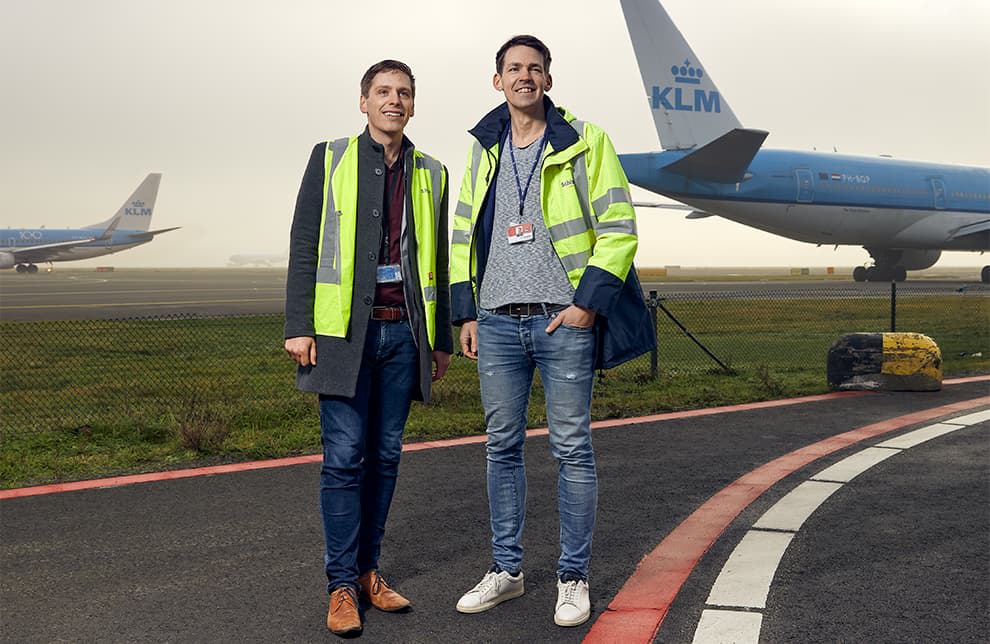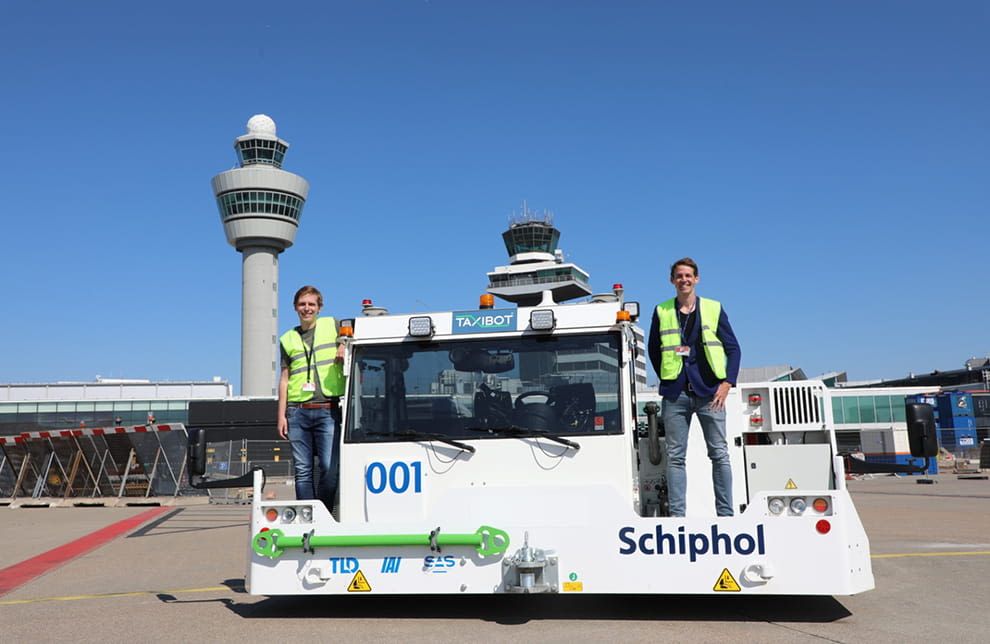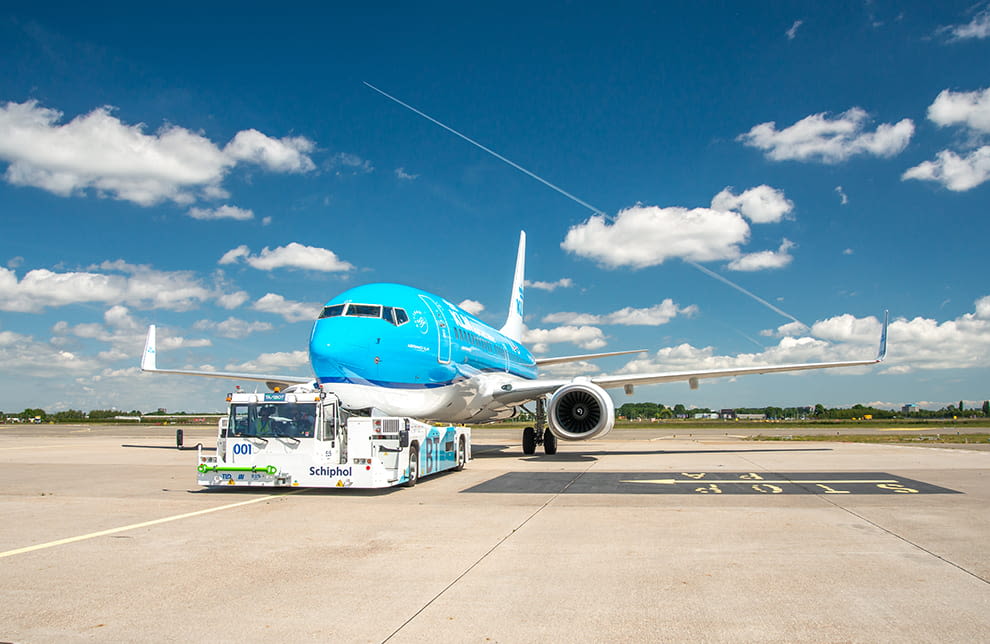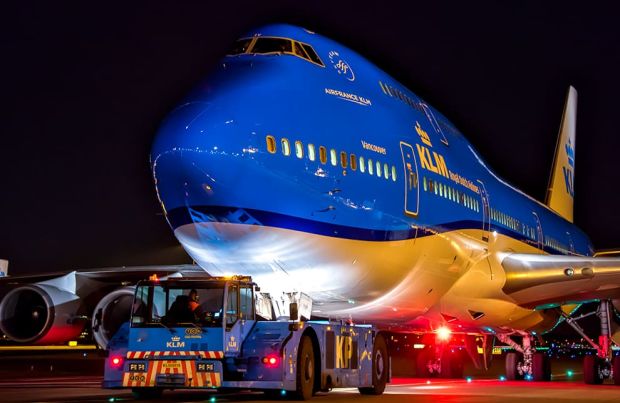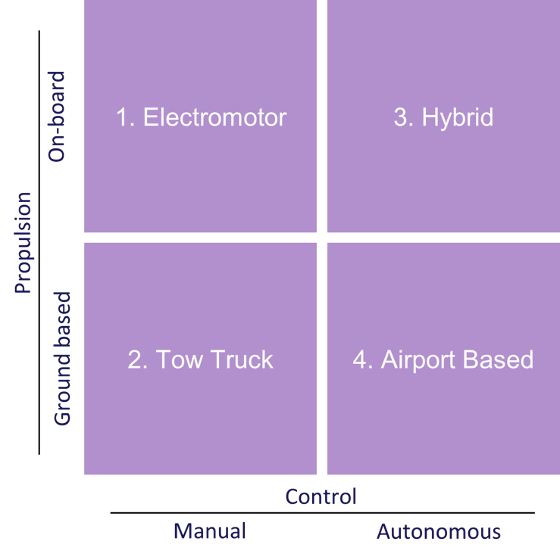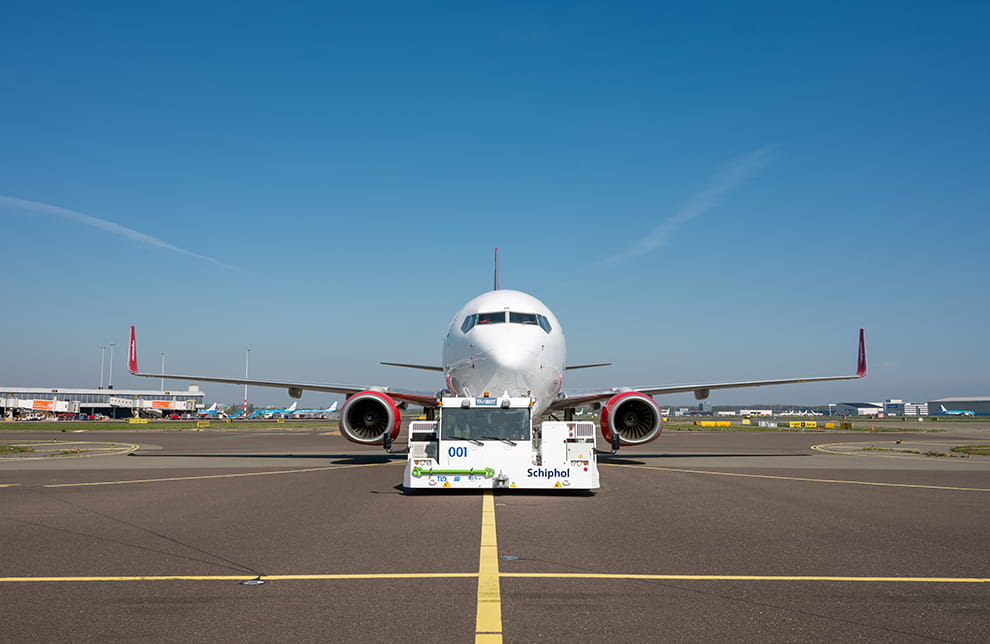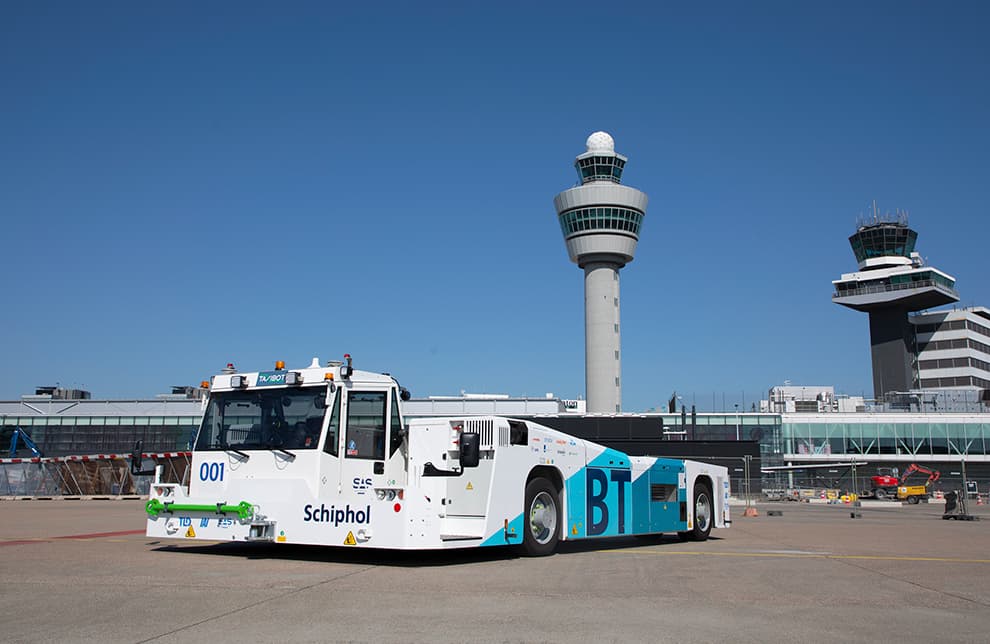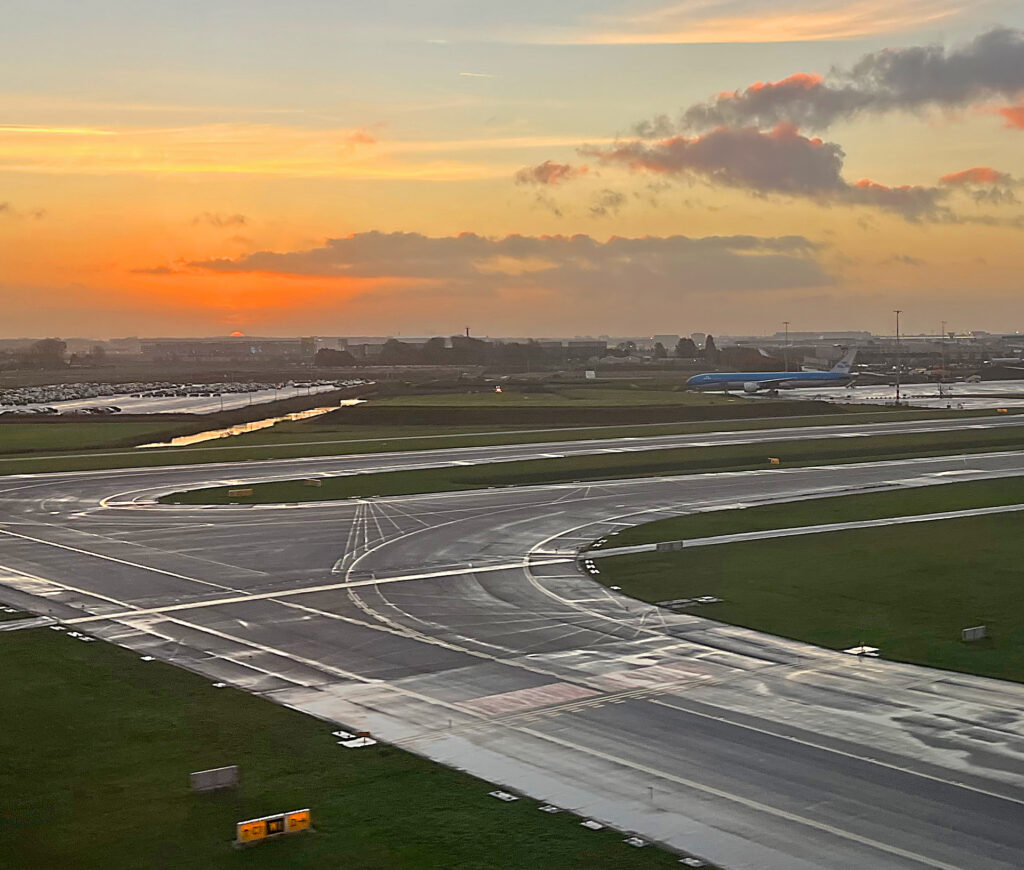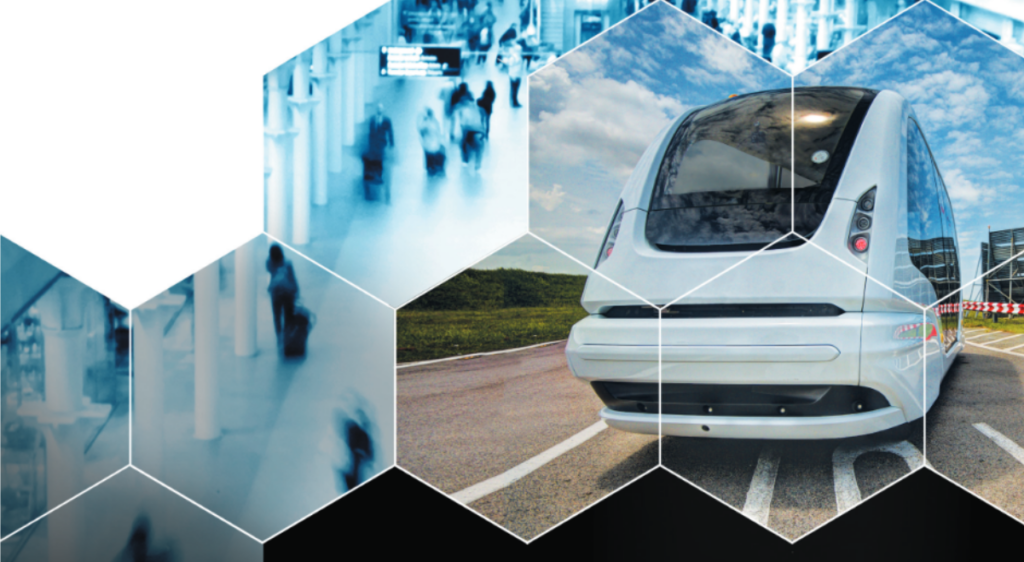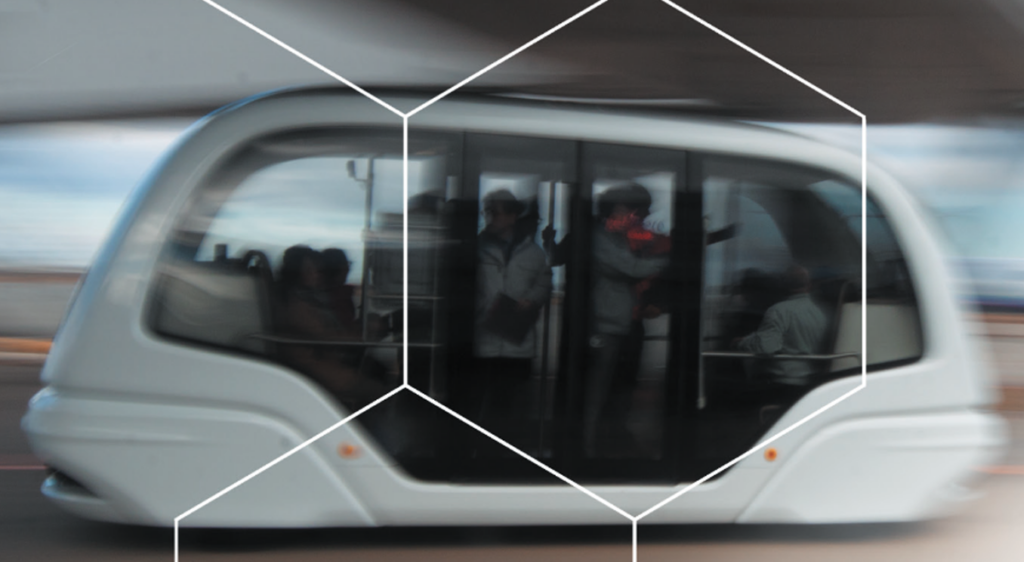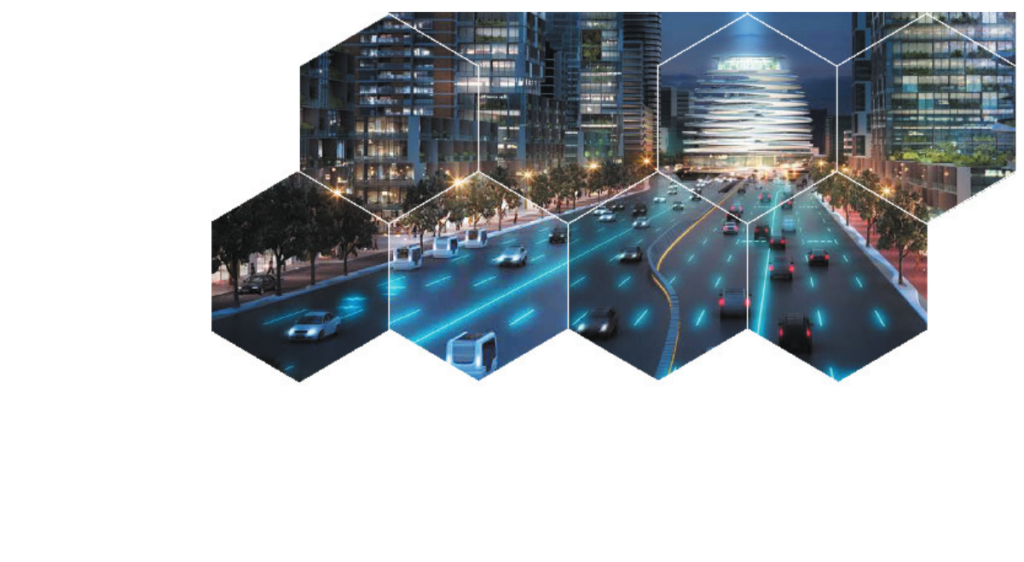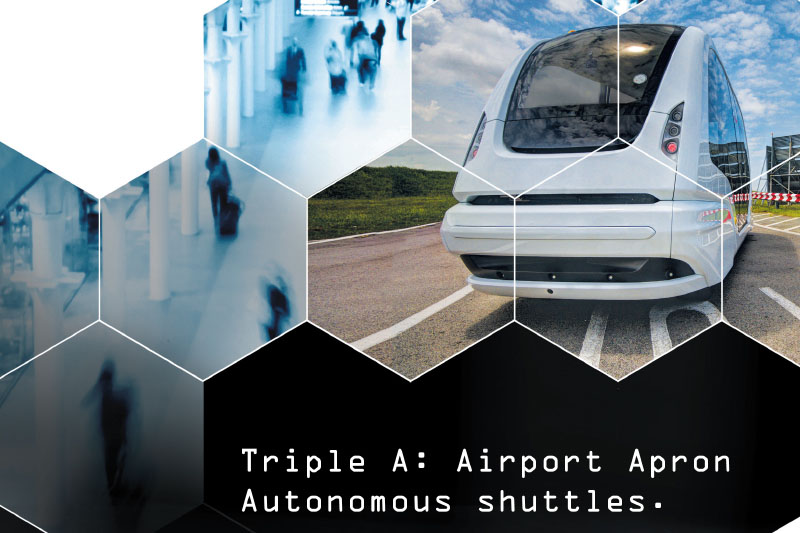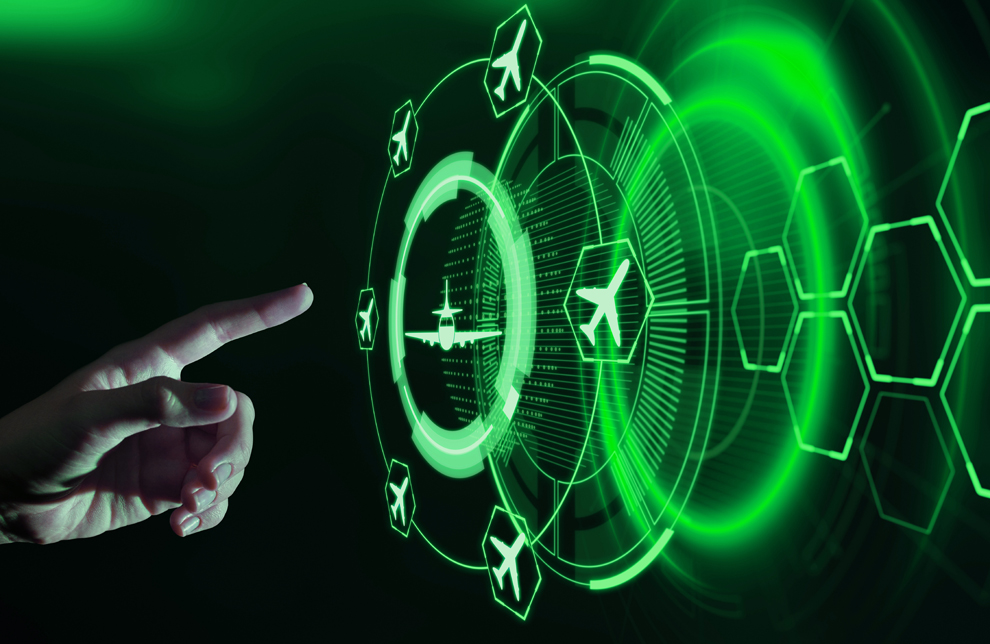Usher A-SMGCS
The future of aviation depends on achieving growth in a responsible and therefore sustainable way (ICAO). The current operational concepts are stretched, with infrastructure and resources limitations impacting ground movements particularly. To address this Advanced Surface Movement Guidance and Control Systems (A-SMGCS) are being introduced worldwide, with Europe imposing a 2030 target for implementation at key airports.
Usher AI provides an asset-less A-SMGCS with guidance by means of automated follow-me vehicles. Combining existing procedures at airports with automated vehicle technology, ensures flexibility while reducing implementation time and the associated costs. Ultimately Usher ensures fluent, deadlock-free routing of all ground movements to improve sustainability, capacity and safety.
Sustainability
Aviation reduces its environmental impact with new technologies, also in ground operations. Time coordinated routing of planes minimizes CO2 and (ultra)fine particles emissions with their impact on the environment and the health of people.
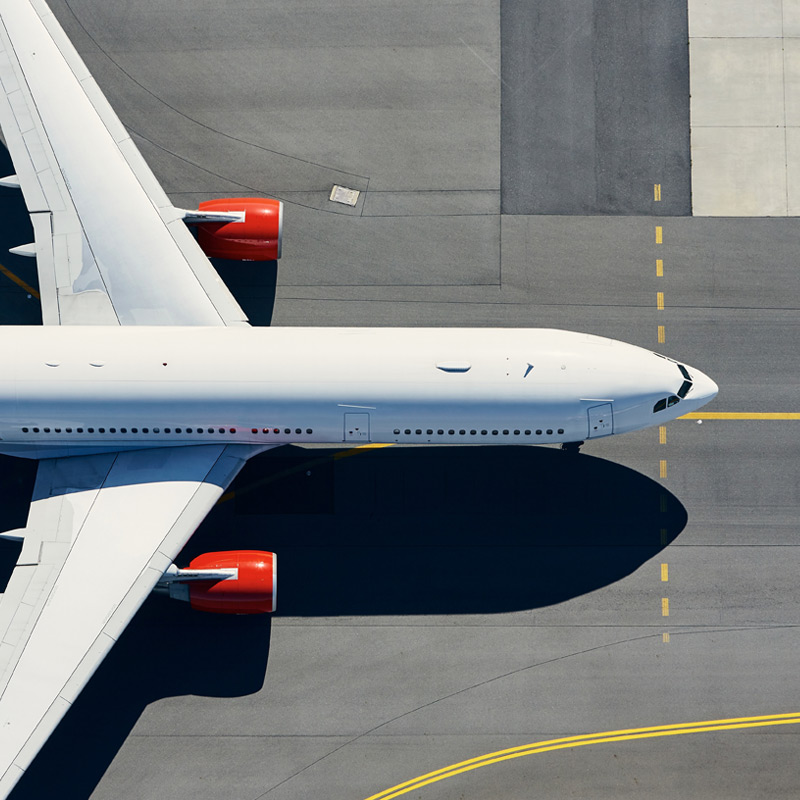
Capacity
Environmental, health and space restrictions limit the growth of airports. To accommodate the rising demand for air travel, dead-lock free routing of ground movements allows for sweating existing airport assets, including taxiways.

Safety
At major airports there are over 10 planes not following the correct taxi-route in a typical month. Centralized routing of movements with direct guidance prevents delays to flights and damage to assets as well as incidents and accidents.
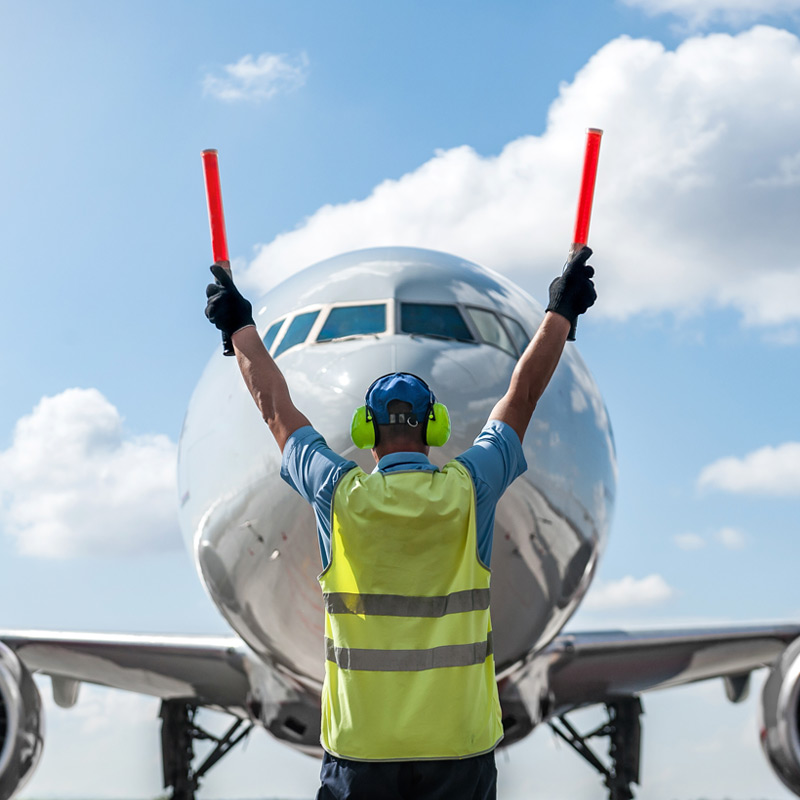
Concept of Operations
Usher AI’s system allows for future-proof, plannable and predictable ground operations. Interfacing both to Air Traffic Control (ATC) and gate planning systems, Usher AI can receive or set routes for planes. The routes planned are dead-lock free and time-coordinated to ensure the fluency of all movements. This minimizes the time on the ground and thus fuel burn and the associated emissions.
By automating the routing, the burden on air traffic controllers is reduced, addressing the staffing shortage and decreasing the resulting delays. The system is operated and supervised by air traffic control, providing authorization for runway crossings and other defined maneuvers.
Taxibot
Usher AI’s approach supports single engine and sustainable taxiing operations as well as engine off taxiing with the semi-robotic Taxibot. The system’s automated follow-me vehicles, Usherbots, pick up aircraft after leaving the runway when arriving and after push-back when departing. Holding locations near runways and gates require a small footprint only, with locations distributed over the airport to avoid job less movements.
For the ultimate ground operations, the system also guides other vehicles operational in the airport maneuvering area. Guiding buses and service vehicles as well ensures operations are optimized from a holistic standpoint. The exceptions are routes that are not plannable, such as emergency vehicles. For their movements Usher’s routes and guidance of airplanes is adjusted (or stopped).
Usher impacts the work of the various stakeholders positively:
Air traffic controller/ANSP
Planning, routing and guidance of traffic on the airport’s surface becomes easier, thus consuming less time and reducing risk. With only limited communication required and procedures fully digital, working seamlessly with other stakeholders in the airport’s APOC is facilitated.

Airport operator
The efficient routing ensures Co2 and (ultra)fine particle emissions are reduced. It also allows for new operational concepts such as sustainable taxiing and starting engines away from the gates. The pressure on gates and runways is relieved while overall safety and efficiency are improved.

Airlines
The centralized routing ensures fuel burn during taxiing and time on the ground is minimized. The workload for pilots is eased, especially at unfamiliar airports, leading to higher predictability and lower damages. With the air traffic controller in the APOC, further optimization is possible.

Technology
Usher AI delivers a turnkey, fully modular system for automated guidance of aircraft via electric vehicles.
The system features routing, guidance and ICT infrastructure modules.
Routing
The routing module features the supervisory system for fleet and database management, scheduling, job assignment, traffic control and incident reporting. In addition, it features tools for layout editing, teleoperation, simulation, verification and validation. The system can interface to planning software, such as departure and arrivals managers (DMAN/AMAN).
The central guidance and routing system has developed over 30 years and proven in over 100 applications in ports, factories, entertainment and people mover environments. It can handle any type of (automated) vehicle, including for example tow trucks. The Usher system has a highly modular and scalable architecture, built on a next generation IoT communication framework and incorporates the latest three-dimensional technologies and cybersecurity tools.

Guidance
The guidance module consists of electric, automated follow-me vehicles. The Usherbots navigate the routes provided by the supervisory system by means of SLAM (Simultaneous localization and mapping) algorithms. For position reference a combination of GPS and the lining and signage at airports is used.
The Usherbots are purpose-developed to ensure a minimal footprint when ‘parked’ near runways and gates. With a maximum speed of 70km/h (±38kts) they accommodate the current processes even at airports with runways located at a longer distance from the terminal. Usherbots feature clear visual messaging, communicating reference data to airplane pilots.
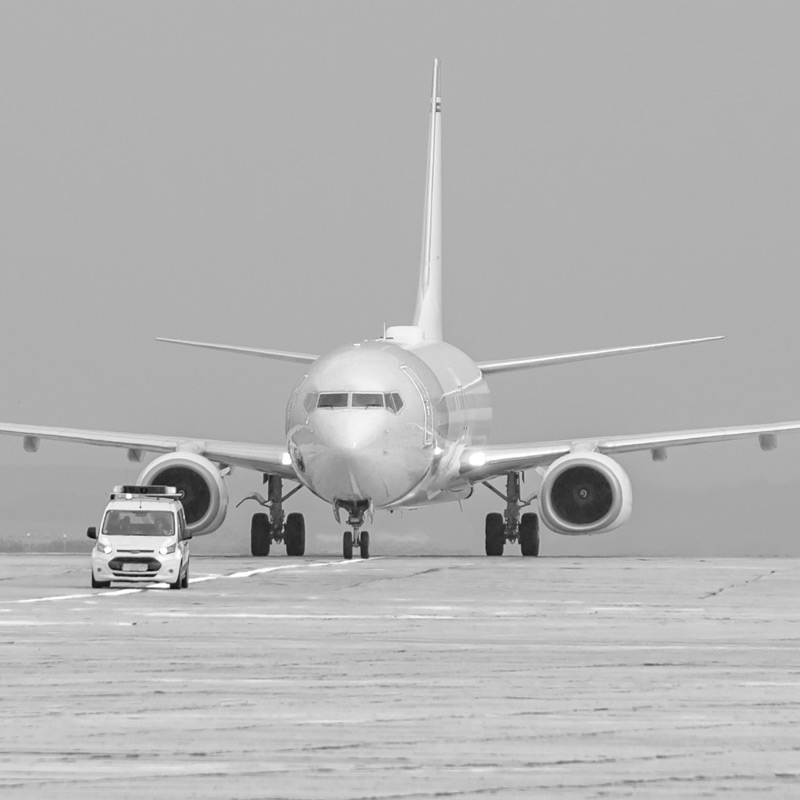
ICT infrastructure
The ICT infrastructure is customized to the requirements of each application and customer. Usher AI needs servers and wireless communication to facilitate the necessary connections to other systems, Usherbots and user interfaces. Typically, Usher AI will use the servers and communication network of the airport, implementing dedicated systems only when required.
Similarly, Usher AI’s system uses existing infrastructure for storage, maintenance and charging of vehicles. Should this not be feasible or desired, the system is designed such that the facilities required feature a minimum footprint to avoid the creation of costly assets in an environment where space is scarce.

Business case
Implementation of A-SMGCS is a recommendation, or even requirement, for airports in Europe by 2030. Regardless from the perspective of efficiency and safety, Usher AI’s concept of routing and guidance generates savings and revenues to the degree that implementation is simply sensible and logical for any airport worldwide.
On average the savings per movement (!) at an airport are likely to range between $167 to $269. Even when only 60% of the low end of the range would be realized in practice and shared 50/50 between stakeholders, it provides a payback term of just 4 to 6 years. Over 30 years the Return on Investment is 300% to 500%, including maintenance and replacement of the Usherbot vehicles each 12 years.
In addition to the savings, the airport can possibly also benefit from higher revenues because of the increase in capacity. With a potential increase of 15% the additional revenues can be worth up to $77 per movement.
For more information on the business case for your operations, please don’t hesitate to contact us.
Resources
Meet the team
Usher AI is leading the way based on the experience and expertise
built up over 20+ years of introducing innovations in multiple challenging operational environments.

Dirk Bresser
- Expertise: apron operations, capacity planning, service manage ment, customer requirements
- Relevant experience: Amsterdam Airport Schiphol
- Bio: Based on a strong operations background, Dirk has been the driver towards fully autonomous and sustainable ground movements. His knowledge of the apron processes and the ability to zoom in and out enables the alignment of rules and regulations with day to day airport operations.

Simon Prent
- Expertise: asset management, gate planning, apron operations, productmanagement, drone networks
- Relevant experience: Amsterdam Airport Schiphol, ANWB Medical Air Assistance
- Bio: Simon has extensive experience with sustainable taxiing operations in relation to gate planning to optimize airport capacity. He leads the implementation of a drone service for (emergency) medical deliveries, aligning a diverse group of stakeholders with varying interests.

Robbert Lohmann
- Expertise: automated vehicles, transit, business management, smart mobility
- Relevant experience: Frog Navigation System, Cargotec, 2getthere, Siemens
- Bio: over the last 24 years Robbert has been at the forefront of automated vehicles, delivering multiple world-first innovations. His strength lies in the functional combination of customer requirements and techno logical capabilities in support of a sound business case.
Use our knowledge
Usher AI has over 40 years combined experience in aviation and autonomous technology. We offer our experience to airports, airlines, ANSPs, governments, OEMs, consultancy firms or any other stakeholder in aviation. As we are not consultants, we offer our services preferably in a partnership with you. We are available to help you with anything from operations to policy, in the following domains: airport air side operations, ATM, drones and automated technology.
Contact us
More information? Please us our contact form.
